The king of the flywheels, sandstone, oleshka - as soon as they call the Polish mushroom in different places. It is equated in taste with a porcini mushroom, its collection period is long, it is easily amenable to various culinary processing, preserving after it a pleasant aroma and all useful properties.
Content
Characteristic features of Polish mushrooms
Many mushroom pickers know how Polish look, because they are quite common and, judging by the photos, are very beautiful and colorful. They are considered a delicacy, and it is not in vain that they have another popular name - “pansky”.
Appearance and photo
Polish mushroom, or chestnut flywheel, olechka, brown mushroom - for the color of the shiny hat of the corresponding chocolate shades. The mushroom is not only noticeable in color, but also in size: the hat grows up to 15 cm in diameter, and the leg - up to 12 cm in height. In young individuals, the cap is convex, like a dome, becomes pillow-shaped as it grows, and in older ones it becomes flat.
The inner layers of the fungus are fleshy and dense, have a yellowish-white color. When the hat is cut, it turns a little blue, but quickly restores the previous shade, and the leg, on the contrary, turns brown from the blue when cut.
Morphology (species differences)
The Polish mushroom belongs to the Boletovy family, the characteristic features of which are the presence of a porous hymenophore and a hat-leg-fruit body. Recently, these fungi have been isolated into a separate genus Immeria (only representatives of this genus have the pigments Badion A and Norbadion A, which provide a bright color of the hat).
Habitat
Polish mushrooms do not tolerate dry periods of the year, so they are common in the northern latitudes with a temperate climate in Europe, in Siberia, the North Caucasus and the Far East. They prefer the roots of aging trees, acidic soil from litter, moss and sandy soils.
Edible or inedible
For a long time, this mushroom was classified according to the classification of the genera Borovikov and Mokhovikov for their external similarity and taste. Although it is considered an edible fungus of the second category, which includes species that have a smaller supply of minerals, vitamins and nutrients, it is very loved and prepared by almost all known methods.
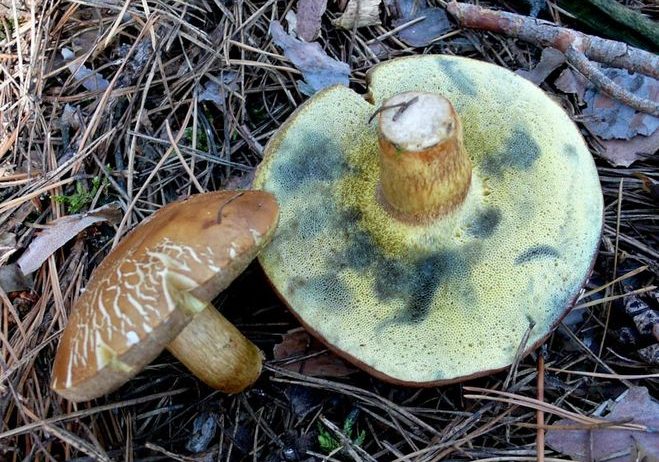 You may be interested in:
You may be interested in:Types and their description
A detailed description and photo of the oleshki shows that they have very similar counterparts from the genus Mokhovikov, which are edible and close to their taste:
- the mottled flywheel is distinguished by the fact that its hat has a more yellowish color, with age it cracks and pink flesh becomes visible;
- in the same way, a brown moss fly is covered with cracks, a white-yellow body of a mushroom peeps out from under its reddish-yellow hat, and the leg is distinguished by a mesh pattern of a reddish hue;
- accordingly, the green flywheel has a yellow-green upper part in bright yellow cracks.
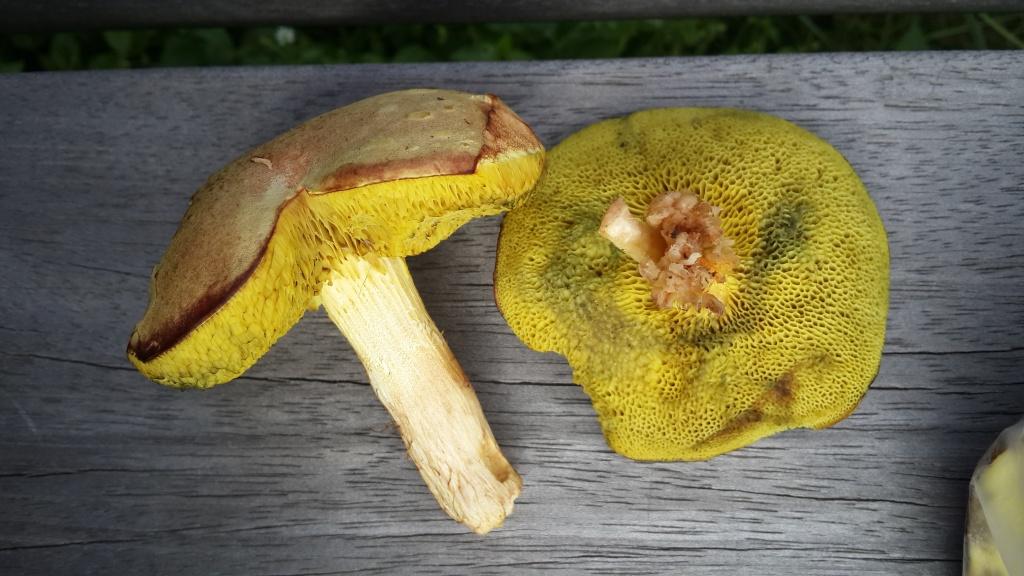
Green flywheel
Unlike the Polish mushroom, all the moss mushrooms do not show bluish spots when pressed.
They also have similar characteristics:
- a grainy-footed oak tree (or a bruise, duvetovy boletus, red-legged boletus, speckled oak), the hat of which is brown-brown in color, the tubular layer is yellowish but tasteless, the leg is reddish in color and is covered with scales;
- the yellowstone (or semi-white mushroom, boletus yellow) has a brownish-clay cap, but differs in the characteristic smell of carbolic, which disappears when cooked.
Collection rules
Pansky mushrooms are best found on small edges in coniferous forests, they rarely grow in large colonies, often under fallen needles, which it is advisable not to rake, but carefully move them away with a thin long branch. It is better to put the harvested crop for safety and good ventilation in a wicker basket, and not in a bucket or bag.
Mushrooms, like many other mushrooms, it is better to collect in the morning, until they are heated by the sun, which provides a longer storage time. The older the mushroom, the more harmful substances have accumulated in it, therefore it is better to leave overripe and old specimens in the forest for their further reproduction. When laying in baskets, it is advisable to lay the mushrooms with their caps down to prevent mechanical damage.
 You may be interested in:
You may be interested in:The main differences from false, inedible mushrooms
The chestnut flywheel is easily confused with its false inedible double - bile fungus or mustard. The main noticeable differences between them:
- mesh pattern legs;
- pink tubular layer;
- bitterness to taste;
- a tarry liquid appears in the section.
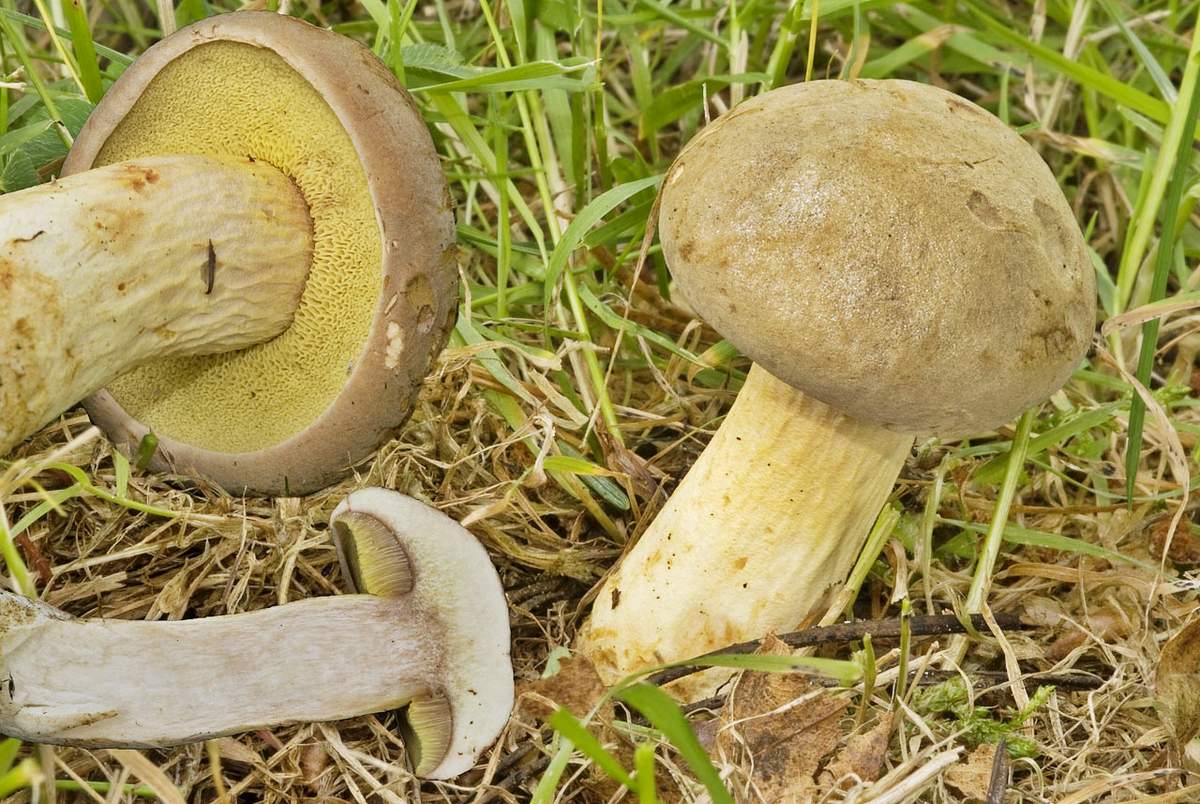
It is more dangerous to confuse an olechka with a poisonous satanic mushroom. It has a grayish-green hat and a reddish tubular layer. The pulp does not turn blue immediately, but initially blushes. The leg is covered with a mesh pattern, the bottom has a bright brick color.

This mushroom is better not to pick up and not to break, since its flesh releases a substance that can affect the respiratory centers and cause complete paralysis.
Benefit and harm
Polish mushrooms contain many minerals and vitamins:
- thiamine (B1), which positively affects the human nervous system, activates the brain, regulates energy metabolism in the body;
- riboflavin (B2), necessary for the synthesis of hemoglobin;
- pyridoxine (B6), which helps to establish a normal metabolism and is important for the work of the cardiovascular, immune and nervous system;
- folic acid (B9), which is involved in protein metabolism, the synthesis of leukocytes, red blood cells, and neurotransmitters;
- nicotinic acid (PP), which promotes tissue growth, lowers cholesterol, stimulates the liver, intestines and stomach.
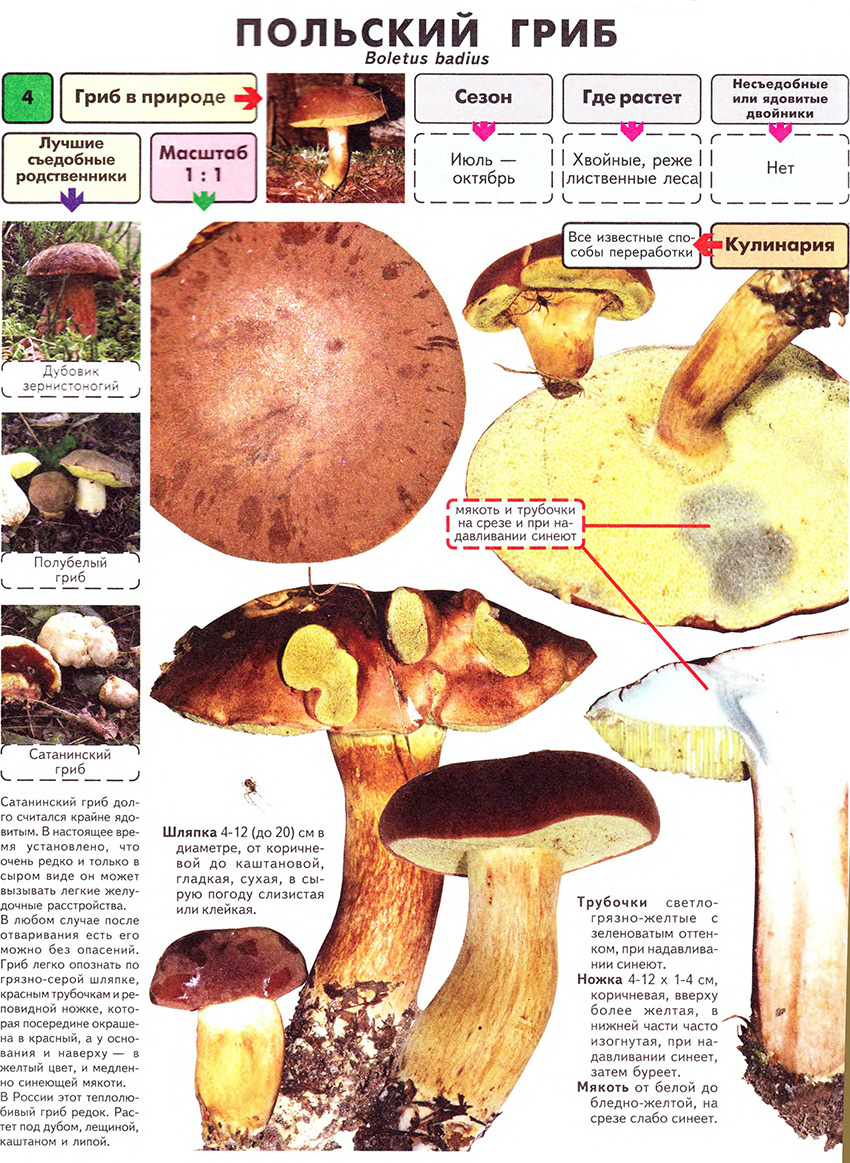
In addition, fruiting bodies are rich in amino acids that lower blood pressure, as well as chitin, which cleanses the body. The manganese, zinc, fluorine, copper, potassium and other elements necessary in the vital system are also inherent in this natural product, beneficial for use.
Oleshki can bring harm only when they are collected along roads or in other polluted places, since they tend to accumulate harmful substances from the soil.
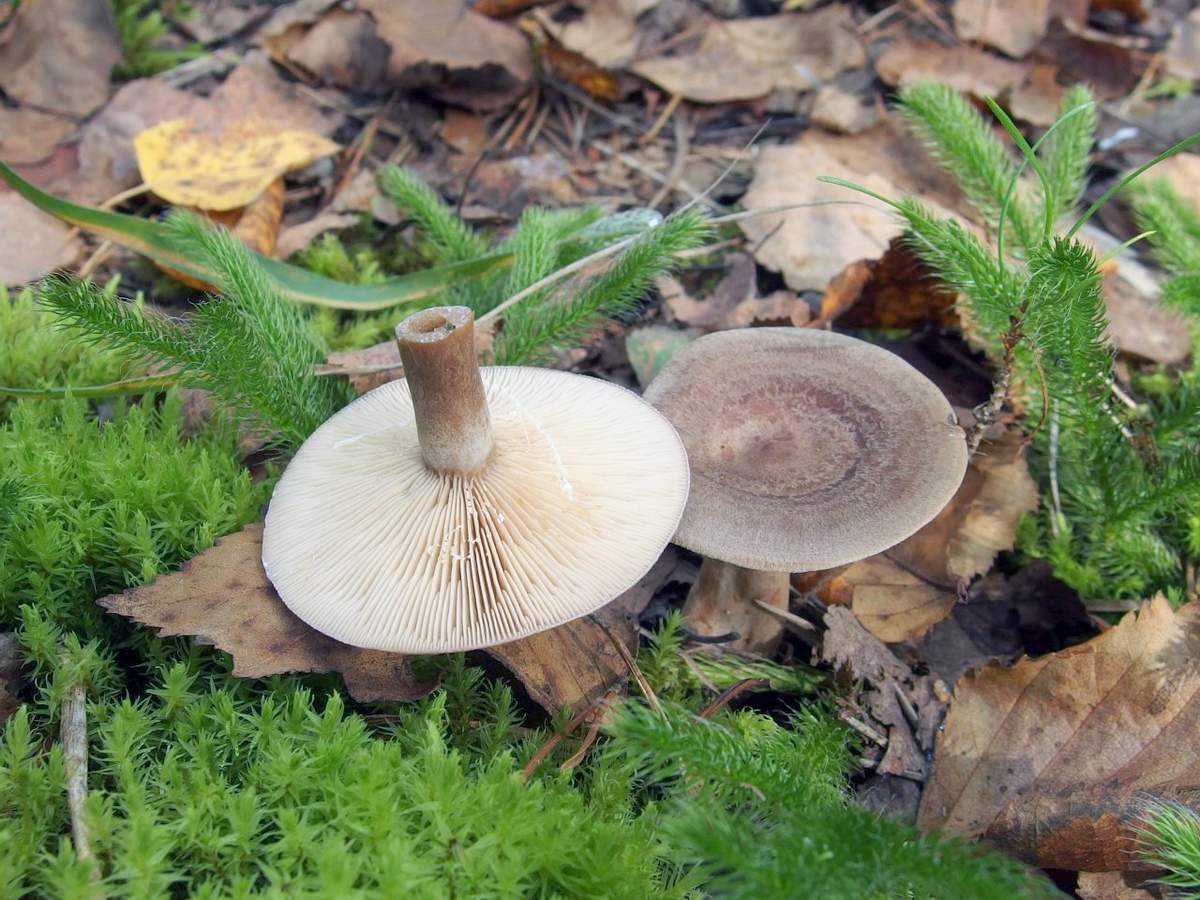 You may be interested in:
You may be interested in:Recipes and cooking features
Close in taste to mushrooms, the Polish mushroom lends itself to any culinary processing while preserving its nutritional value and aroma. Cooking, salting, frying, stewing, pickling, drying and freezing should be carried out with mandatory grinding of the mushroom, since it, like the rest, is difficult to digest.
All kinds of soups with vegetables and cereals, mushroom stew, pancakes, pies, dumplings and pies, sauces and gravy, salads from fried, boiled, salted and pickled mushrooms, chops and stewed in sour cream - many dishes will decorate and diversify the casual and festive table with these by the inhabitants of the forest.

Before frying, it’s better to boil the peel for 20 minutes, constantly removing the resulting foam, then they will turn out tastier and softer. So that the mushrooms do not darken much, it is better to leave them longer in their own broth. When marinating, it is also necessary to boil the fruiting bodies with a change of water several times. For 1 kg of mushrooms for marinade you will need:
- 1 liter of water;
- 50 ml of vinegar 9%;
- 1 tablespoon of sugar and salt;
- several cloves of garlic, bay leaves, dried cloves.
Mushrooms must be boiled for about 7-10 minutes in the marinade, and then they also pour the scones spread on glass jars. Before rolling on top, you can pour a little sunflower or olive oil, and after twisting, warmly wrap the cans until they cool completely.
Answers to Common Questions
When processing, it is necessary to cut out areas damaged mechanically and by pests, and wash them thoroughly several times in running water. To eliminate the excessive fragility of the fruiting bodies, it is better to soak them for several hours in saline.
A dug groove in a shady place with a depth of about 30 cm, a substrate of forest soil with coniferous, hornbeam, beech or oak branches, humus, sand and leaves from the place where the moss trees, aging mushrooms, soaked for a day in water and mashed to a mushy appearance, were plentiful watering for about a month - all the necessary ingredients and conditions for creating a new mycelium near the house or in the country.
Useful, tasty, aromatic and nutritious Polish mushroom is easy to distinguish from inedible species, it is easy to prepare and prepare, tolerates transportation and storage, can be cooked without loss of taste, and is similar in quality and composition to porcini mushrooms.

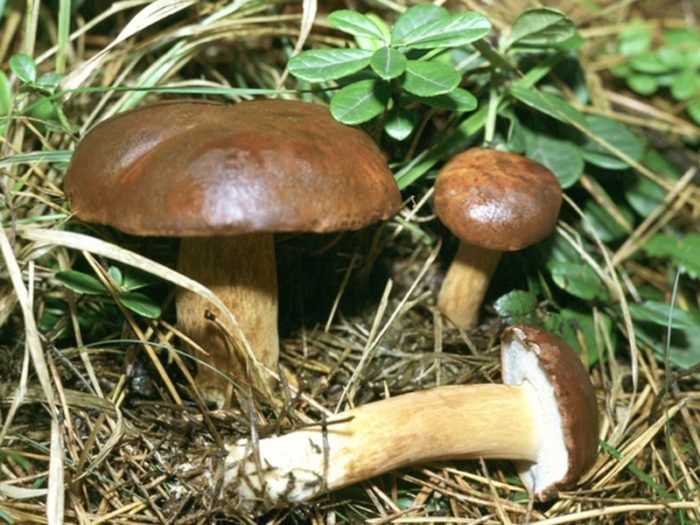
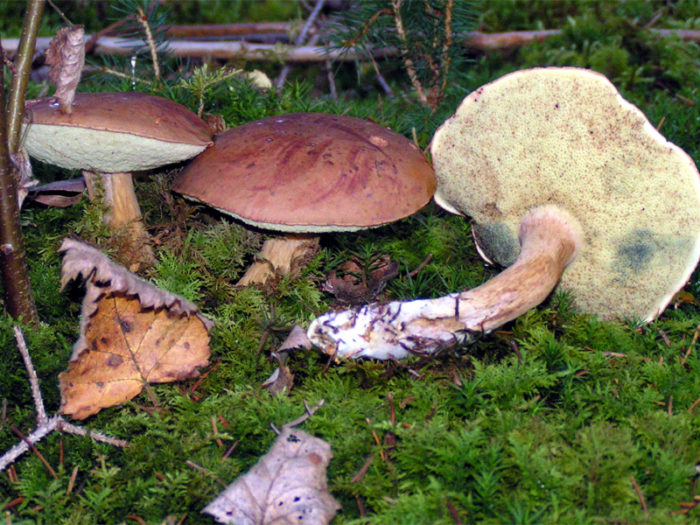
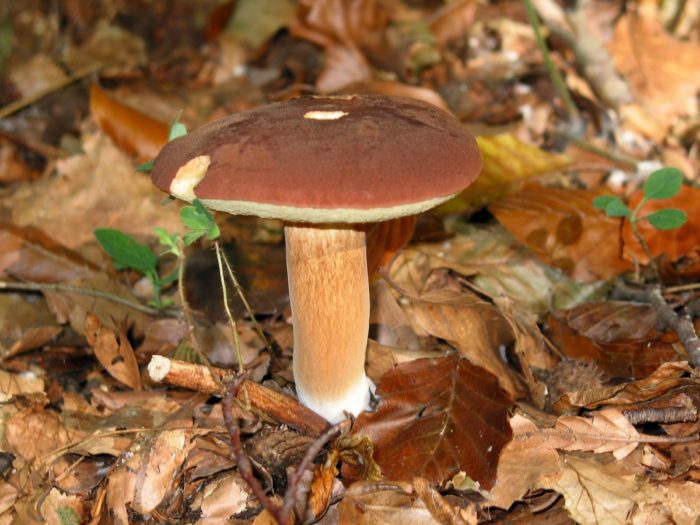
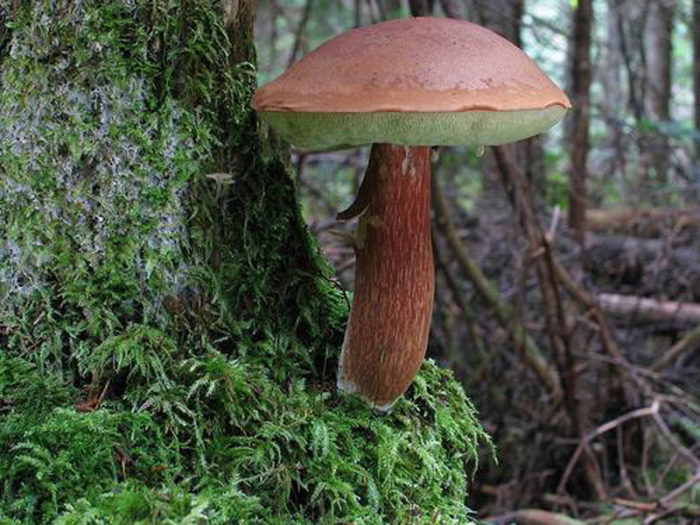
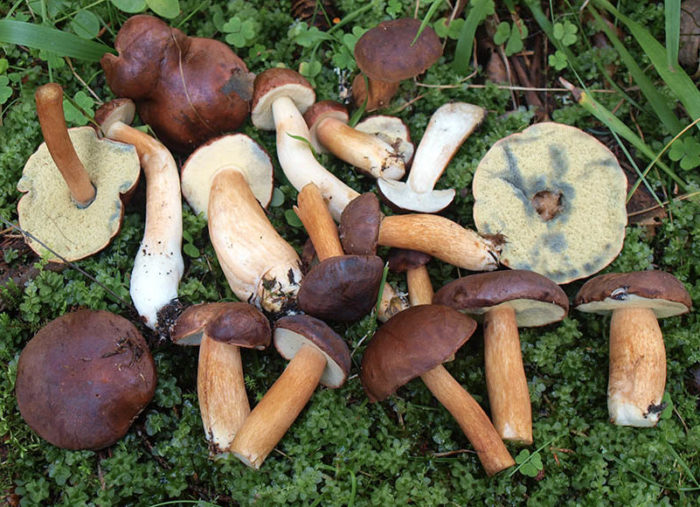
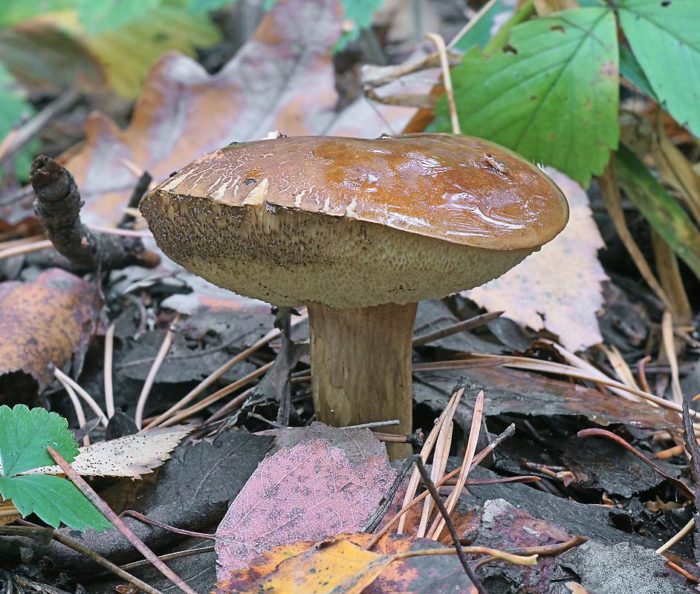
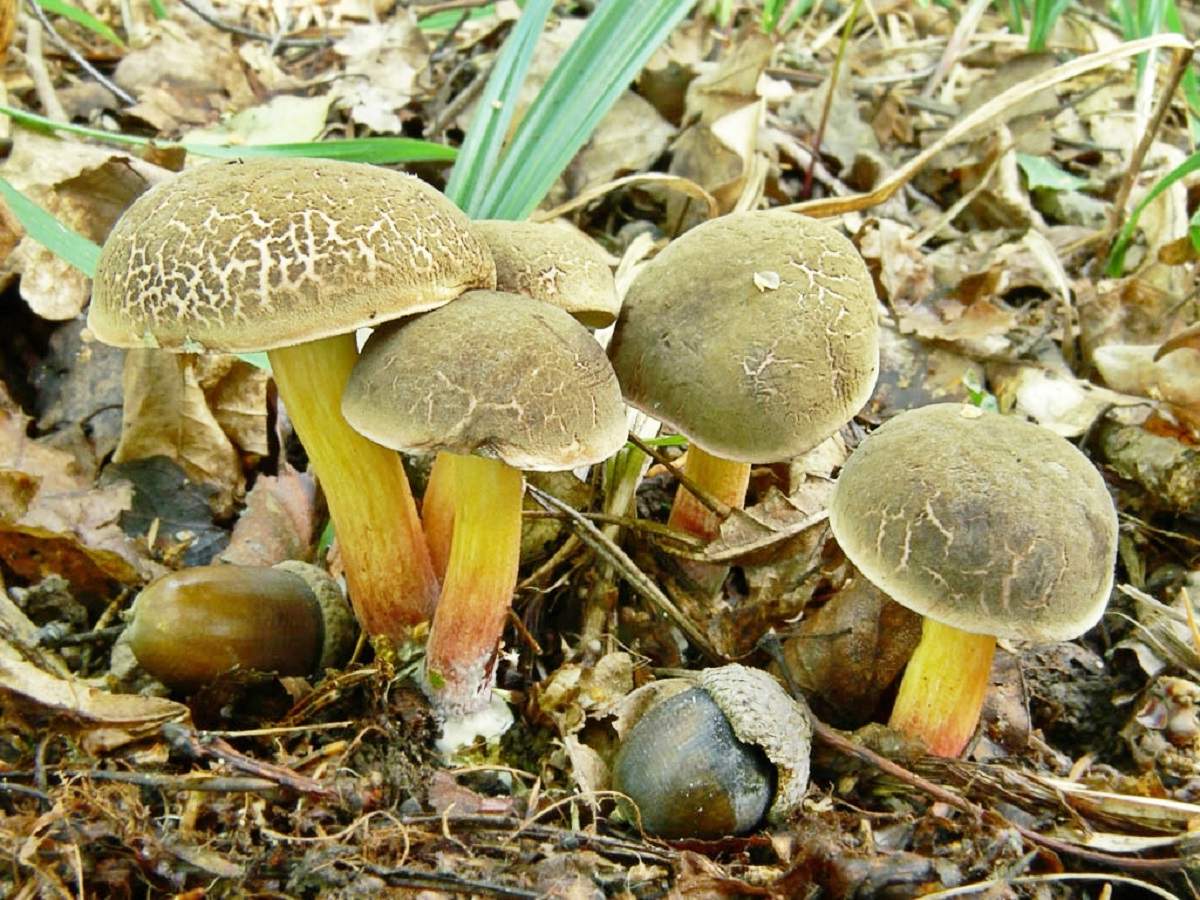
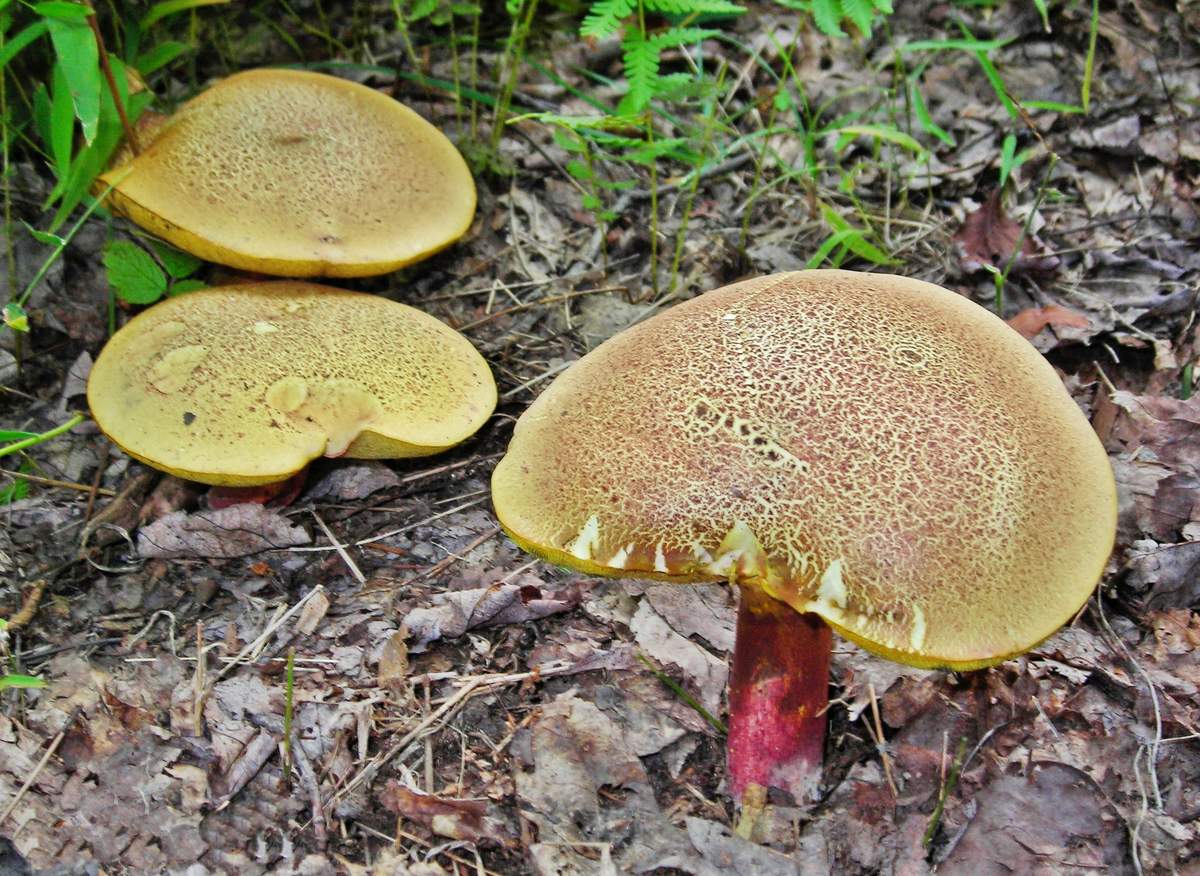
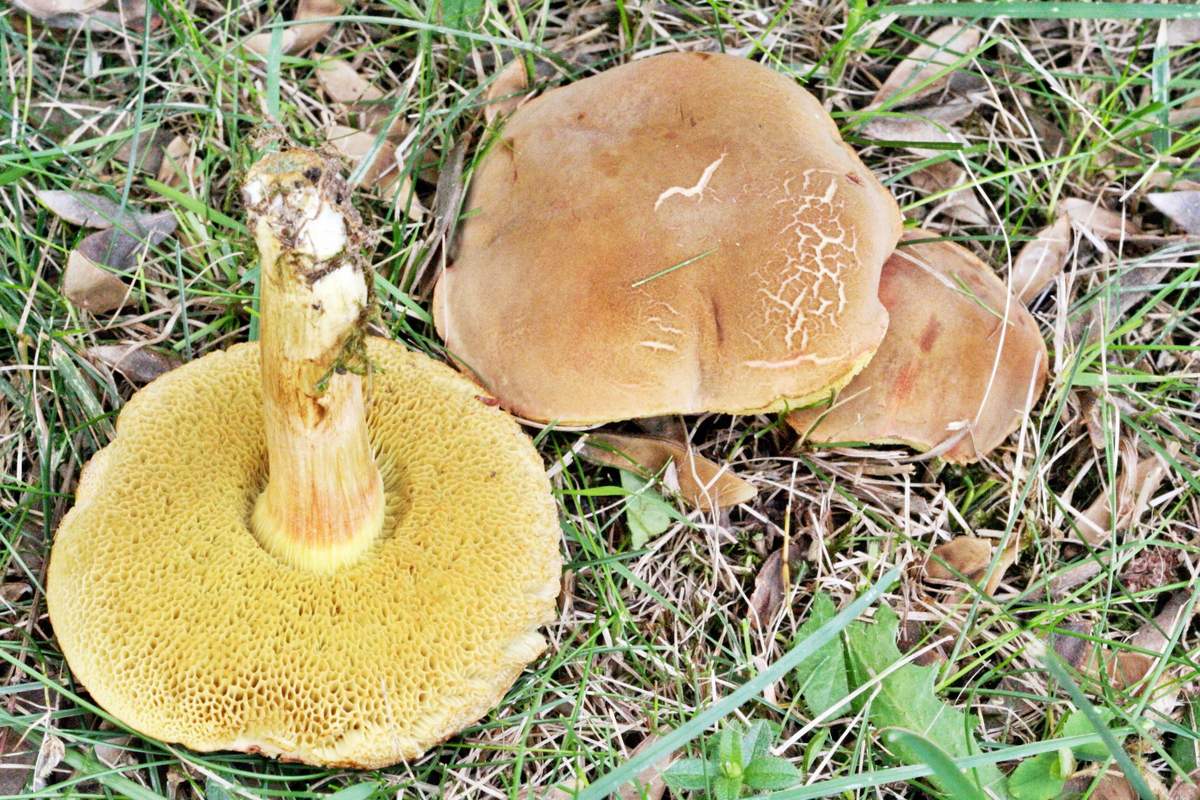
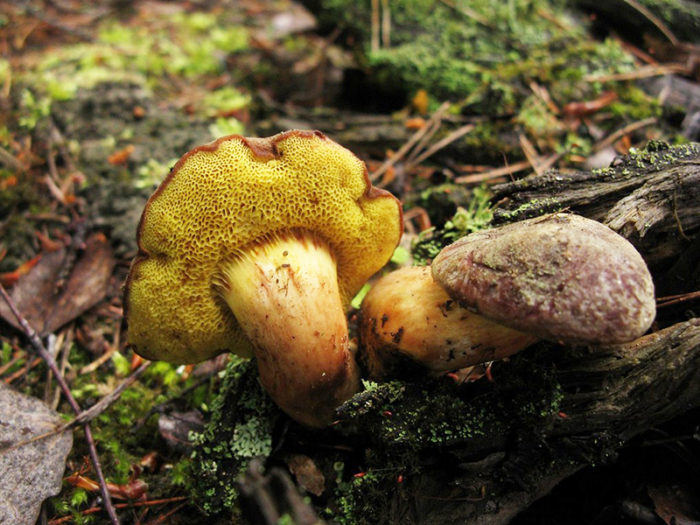
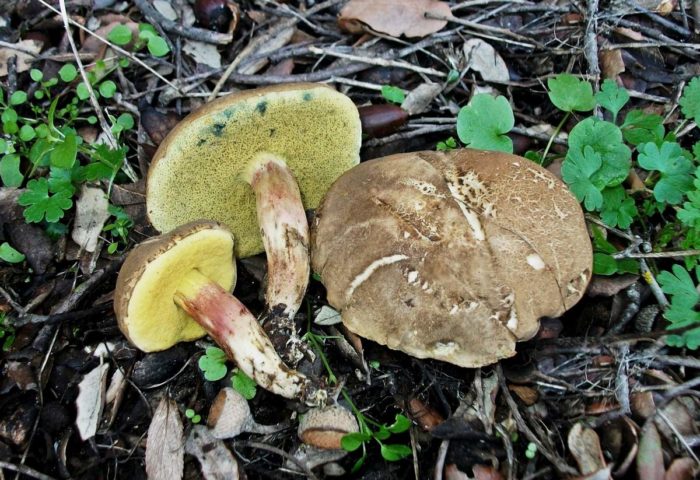
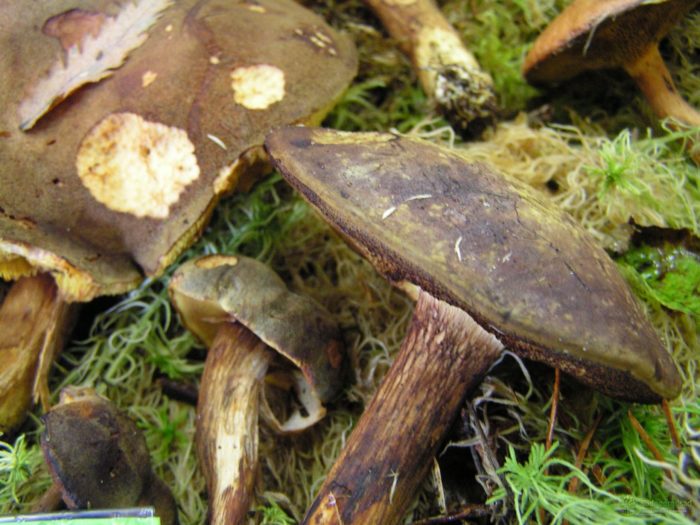
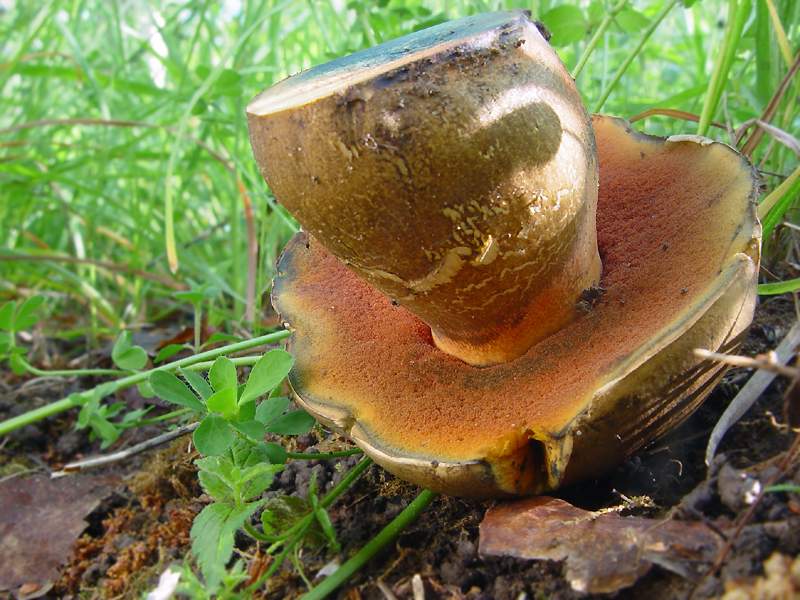
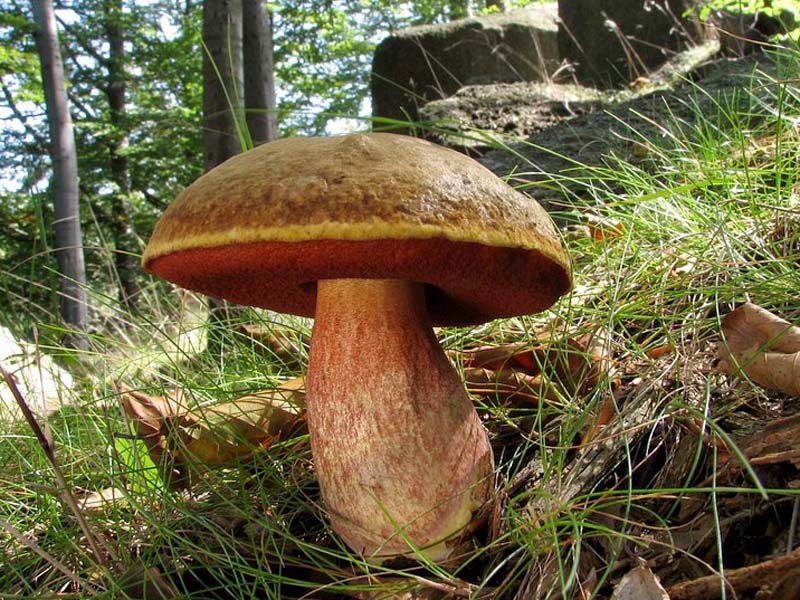
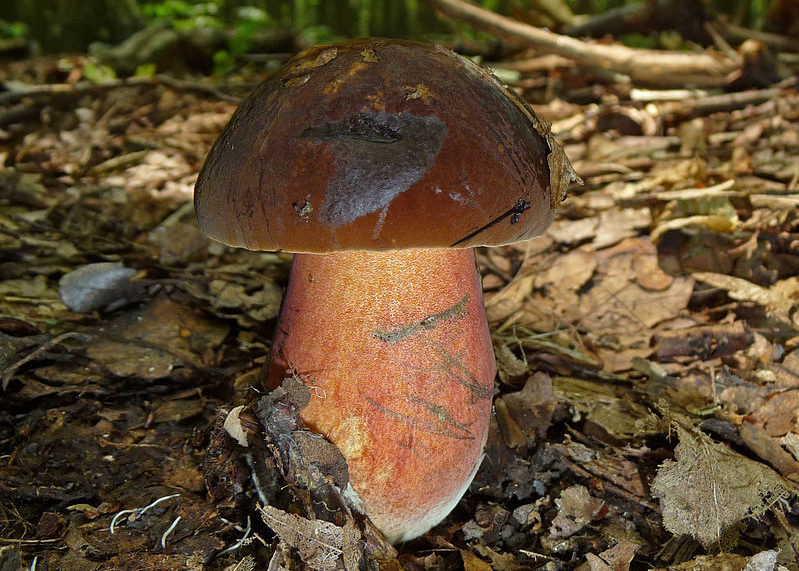
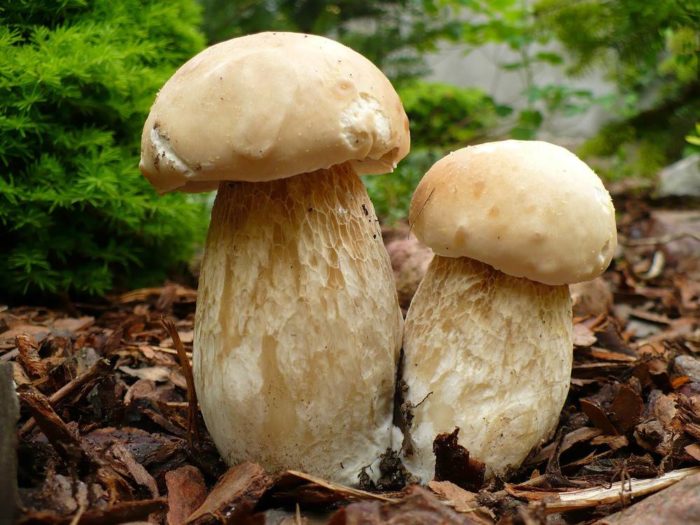
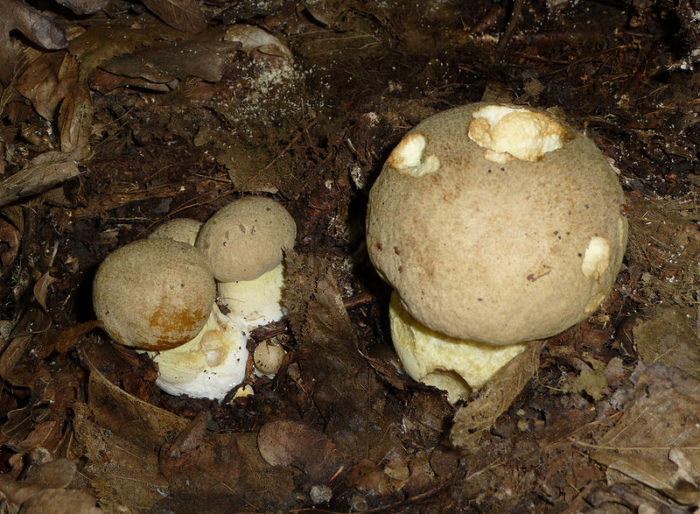
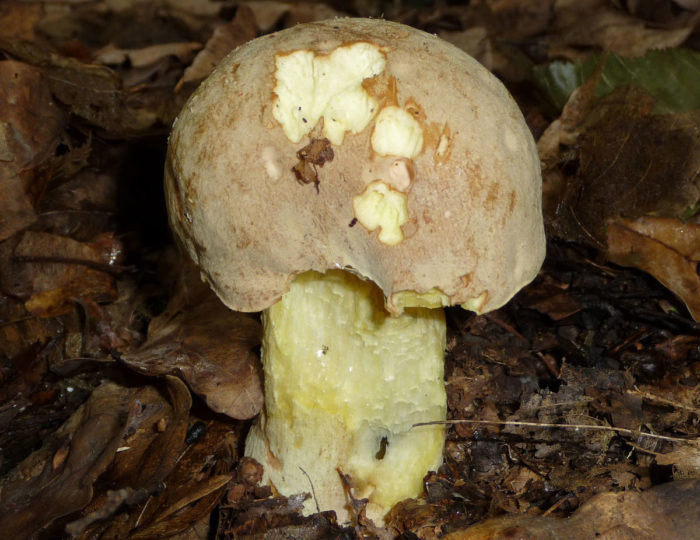



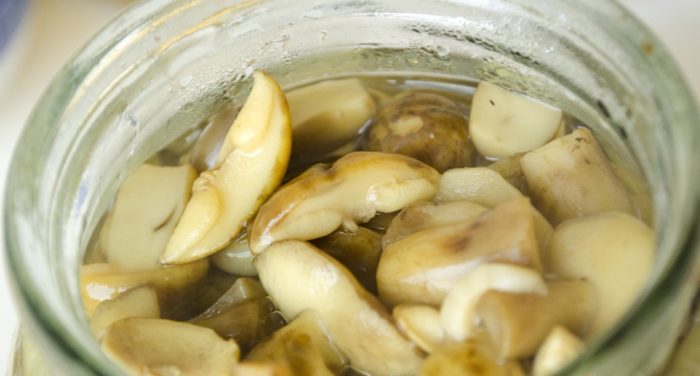
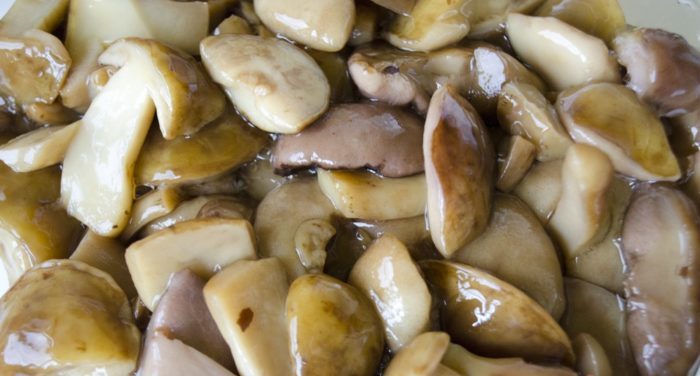
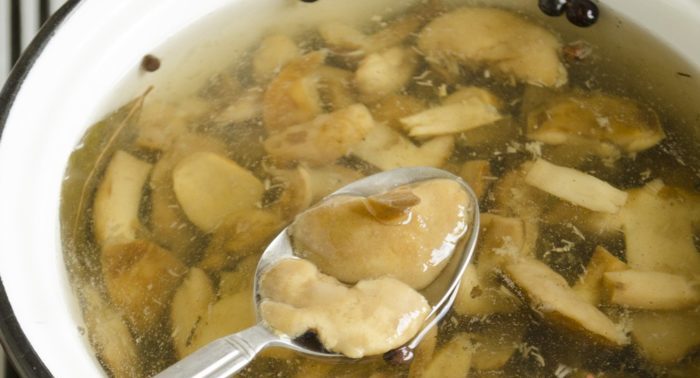
 Care and use of Kombucha at home (+22 photo)
Care and use of Kombucha at home (+22 photo) Edibility of the fungus of the motley umbrella and its description (+19 photo)
Edibility of the fungus of the motley umbrella and its description (+19 photo) Description of edible and inedible oils, their poisonous counterparts (+40 photos)
Description of edible and inedible oils, their poisonous counterparts (+40 photos) Useful properties of milk mushroom and its contraindications (+17 photos)
Useful properties of milk mushroom and its contraindications (+17 photos)
Olga
This pig is better not to eat
George
Madam, you better not go to the forest. And raspberries will be a wolf berry.
Konstantin
I was very lucky that my grandfathers and grandmothers taught me mushrooms. And if I studied under “articles” like this, I would not have been there for a long time. I have not seen such a mess even in the speeches of politicians. The most important sign of the Polish mushroom has not been named, and the real photo of this particular mushroom is just one